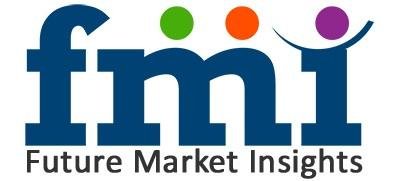In 2023, the total sales of baby feeding accessories generated a revenue of around US$ 2,237.3 million. The industry share of baby feeding accessories is predicted to expand at a rate of 6.4% between 2024 and 2034. In terms of value, the global market size is estimated to reach US$ 4,385.1 million by 2034, increasing from US$ 2,358.1 million in 2024.
A progressing transition toward health-aware parenting is driving the global baby and toddler feeding products and accessories market. Growth in e-commerce and online retail channels has also played a decisive role in expanding awareness about baby feeding essentials apart from increasing their sales.
Request for a Sample of this Research Report:
https://www.futuremarketinsights.com/reports/sample/rep-gb-18764
Key Takeaways from the Global Baby Feeding Accessories Market Study Report
- The United States dominated the baby feeding essentials market in 2023 and is expected to retain its dominance till 2034, progressing at 4% CAGR.
- The market for baby feeding products in Australia is poised to grow at an impressive 7.4% rate from 2024 to 2034.
- China is the leading manufacturer of baby feeding accessories, and it is expected to progress at 6.5% CAGR during the projected years.
- India is predicted to witness an astounding growth rate of 8.5% in sales of baby feeding accessories over the next ten years.
Competitive Landscape for Baby Feeding Accessories Market Players
Though there are some international brands for providing premium baby feed essentials globally, the overall market is highly diversified and competitive in the low-priced segment. Because of the localized character of the industry, items are tailored to appeal to a range of consumers who value goods that conform to their cultural standards.
“Leading personal care accessories brands are also coming up to take advantage of this growing market niche by offering premium, high-quality items that appeal to high-income parents. Meanwhile, emerging market players have adopted product diversification as the key strategy to capture a fair share of the baby feeding essentials market.” – Sneha Verghese, Senior Consultant for Consumer Goods and Products at Future Market Insights (FMI)
Recent Developments by the Baby Feeding Accessories Manufacturers
In March 2022, NUK announced the debut of its first-ever sustainable collection of pacifiers, cups, plates, bowls, and baby utensils under the brand ‘NUK for Nature.' Inspired by the rising demand from parents for more environmentally friendly infant care options, all products are recyclable and come with How2Recycle instructions on how to dispose of them responsibly. As part of NUK's 2012 pledge to minimize energy use, the orthodontic pacifiers also come with a reusable pacifier storage container and are produced using energy from renewable sources.
In February 2022, Dr. Dad, a premium parenting resource website, opened an e-commerce store to give Indian parents access to the finest, physician-approved items. The organization's philosophy is to design items only after comprehending the demands of present-day and prospective parents. A greater selection of unique items from several categories, including feeding supplies, healthy kits, swaddles, parenting books, oral kits, and much more, are available in one location on the Shopping Tab of the updated website. In addition to the special items, parents can also obtain advice and assistance from medical professionals for their newborns on this website.
Key Segments Covered by Baby Feeding Accessories Industry Survey Report
By Product Type:
- Bottles and Nipples
- Plastic Bottles
- Glass Bottles
- Silicone Nipples
- Breastfeeding Accessories
- Baby Feeding Utensils
- Baby spoons & forks
- Baby Bowls
- Baby Pacifiers
- Plates
- Others (Cups, Tray, etc.)
- Baby Formula Dispensers
- Other Product Types
By Material Type:
- Metallic Accessories
- Non-Metallic Accessories
- Plastic
- Silicone
- Other Materials
By Age Group:
- Less than 6 Months
- 6 months to 12 Months
- 12 Months to 3 Years
- More than 3 Years
By Price Range:
- Low (Less than US$ 50)
- Medium (US$ 50 to US$ 100)
- High or Premium (More than US$ 100)
By End Use Verticals:
- Residential Use
- Commercial Use
- Day Care
- Nursing Centers
- Other Commercial Uses
By Sales or Distribution Channel:
- Online Retail Channels
- E-commerce
- Company Owned Website
- Offline Sales Channels
- Supermarket or Hypermarket
- Specialty Stores
- Other Retail Formats
By Region:
- North America Market
- Latin America Market
- Europe Market
- East Asia Market
- South Asia and Pacific Market
- The Middle East and Africa (MEA) Market
